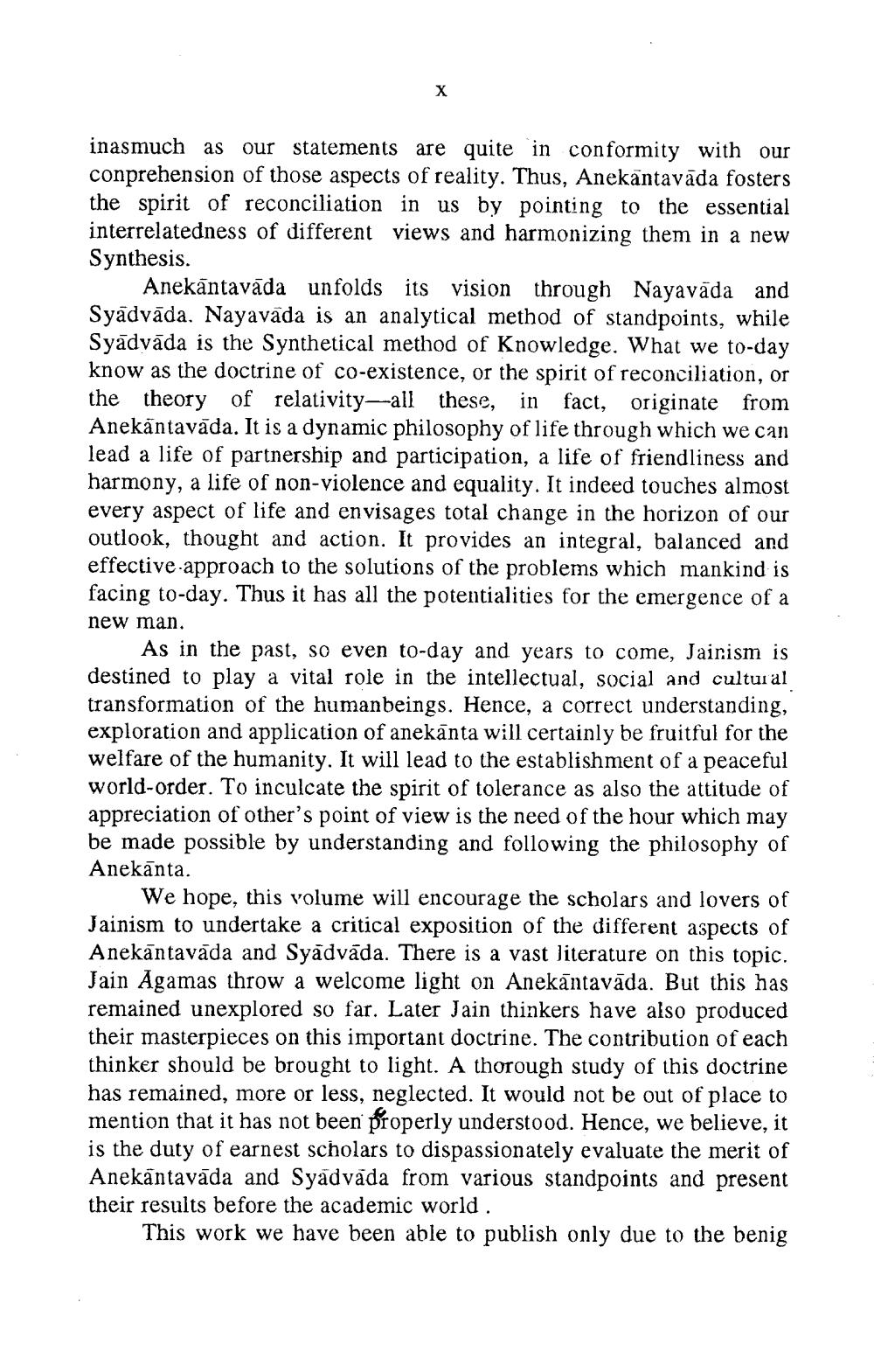________________
inasmuch as our statements are quite in conformity with our conprehension of those aspects of reality. Thus, Anekantavāda fosters the spirit of reconciliation in us by pointing to the essential interrelatedness of different views and harmonizing them in a new Synthesis.
Anekāntavāda unfolds its vision through Nayavāda and Syādvāda. Nayavada is an analytical method of standpoints, while Syādvāda is the Synthetical method of Knowledge. What we to-day know as the doctrine of co-existence, or the spirit of reconciliation, or the theory of relativity-all these, in fact, originate from Anekantavāda. It is a dynamic philosophy of life through which we can lead a life of partnership and participation, a life of friendliness and harmony, a life of non-violence and equality. It indeed touches almost every aspect of life and envisages total change in the horizon of our outlook, thought and action. It provides an integral, balanced and effective approach to the solutions of the problems which mankind is facing to-day. Thus it has all the potentialities for the emergence of a new man.
As in the past, so even to-day and years to come, Jainism is destined to play a vital role in the intellectual, social and cultural transformation of the humanbeings. Hence, a correct understanding,
loration and application of anekānta will certainly be fruitful for the welfare of the humanity. It will lead to the establishment of a peaceful world-order. To inculcate the spirit of tolerance as also the attitude of appreciation of other's point of view is the need of the hour which may be made possible by understanding and following the philosophy of Anekānta.
We hope, this volume will encourage the scholars and lovers of Jainism to undertake a critical exposition of the different aspects of Anekāntavāda and Syadvada. There is a vast literature on this topic. Jain Agamas throw a welcome light on Anekāntavāda. But this has remained unexplored so far. Later Jain thinkers have also produced their masterpieces on this important doctrine. The contribution of each thinker should be brought to light. A thorough study of this doctrine has remained, more or less, neglected. It would not be out of place to mention that it has not be
rly understood. Hence, we believe, it is the duty of earnest scholars to dispassionately evaluate the merit of Anekantavāda and Syadvada from various standpoints and present their results before the academic world.
This work we have been able to publish only due to the benig




